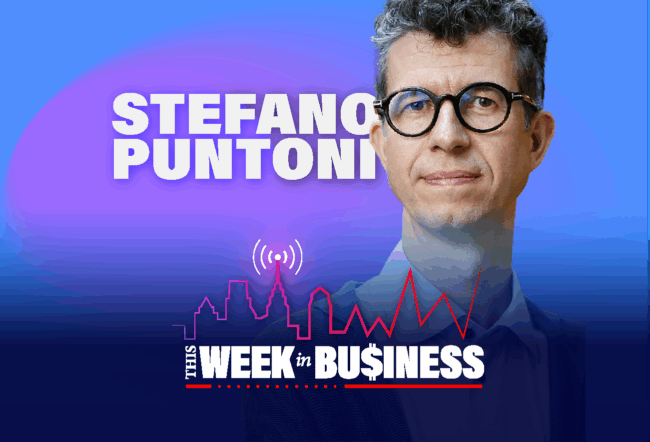From a lone statistician toiling over narrowly defined problems for the marketing department, to a C-level executive overseeing a mission-critical area impacting every function of the company, the meaning of “data and analytics professional” has changed a lot in recent years. A. Charles Thomas’s career has reflected those developments.
Thomas, who is General Motors’ first-ever chief data and analytics officer (CDAO), shared where corporate data analytics has been, where it’s going and the evolution of chief data officer roles, in a keynote at the recent Wharton Customer Analytics conference ‘Successful Applications of Analytics.’ He spoke from his experience not only at GM, but also other major companies including Hewlett Packard, the United Services Automobile Association (USAA) and Wells Fargo.
In the late 1990s, he said, data analysts were typically individual contributors working with transactional data involving marketing, credit and retail. “The [data analyst’s] reputation was ‘a smart guy,’” said Thomas. “You want an answer, you come to Charles.”
The field shifted as self-service BI (business intelligence) was introduced in the early 2000s. With these tools, employees with no background in statistics or data analytics could run some of their own reports and search data for insights. (Current examples include Google Analytics, Zoho Reports, and Microsoft’s Power BI.) At this stage, he said, the way people thought of a data analyst shifted from individual contributor to manager. A new expectation for data professionals was to be able to explain analytics to others, in a way that “your grandmother would understand.”
The communication piece remains a critical capability, Thomas noted. He said of data professionals, “You’ve got to find creative ways to talk about what you do every single day, and make it relevant to [business leaders] so that they take action and then you hold them accountable for that action.”
Data Analytics Makes It To the C-Suite
Data analytics started expanding into HR, consulting and financial services around the late 2000s, Thomas said. He joined USAA in 2008, serving as its chief data and analytics officer until 2014. He noted that around this time, data and analytics started to play a more central role in business. He said he was initially hired to report to the chief marketing officer, but because of that arrangement he was solving only marketing problems, not enterprise problems. USAA soon shifted him to reporting directly to the head of customer experience so he could work on broader issues.
“Every single person should have an aptitude for insights. This is no longer a back-office activity. It’s at the table and it should be part of how we make decisions.”
Also in this period, more CDO (chief data or digital officer) and CDAO positions were created, and these individuals became trusted advisors to business leaders, said Thomas. “Come to me first…. I can help you make smarter decisions faster. I can hedge your risk.”
As chief data officer at Wells Fargo from 2014 to 2017, Thomas saw self-service BI become more widespread, and witnessed the advent of advanced visualization. Sophisticated graphics — beyond the usual Excel line or bar graph — now helped clarify data for people, and facilitated discovering insights and making predictions.
Mobile applications began to proliferate, too. Thomas noted that having more people access basic information for themselves was good for his department and for data analytics as a field. “We were trying to push as much into the hands of decision makers with mobile applications so they could scroll through and look at performance.” He said this helped free up time and resources for data analysts to work on higher-order, business-critical problems instead of constantly having to report on “‘how many we sold yesterday’…. Quite frankly, I don’t care how many we sold yesterday,” he said. “I want to help us double that number tomorrow.”
Thomas noted that the evolution of CDO, and chief analytics officer (CAO) roles happened separately. The CDO was put in charge of company-wide governance and architecture of data, and the CAO of extracting insights. But many firms today — including GM — have fused them into the CDAO role, which Thomas believes is the best way to go.
“I think you have to have singular accountability for data and analytics because you’ve got privacy [issues], you’ve got all these other issues around legislation, around hacking,” he said. While he also works with the chief information security officer and chief privacy officer, he said, as CDAO he is the “tip of the spear” for data. He added that analytics should be “touching every single … thing that you do” at a company.
‘Optimize Everything’
Thomas, who discussed his work at GM and the emerging state of data analytics, said the field is increasingly incorporating artificial intelligence and machine learning, and the new wave in data is the deployment of the IoT (Internet of Things). In the automotive industry, these trends translate into products and concepts such as electric vehicles, autonomous vehicles and a connected ecosystem of transportation that could help cities reduce traffic congestion. Other projects on the horizon for GM include an insurance company and a fleet management company, he said.
Part of the reason analytics is so crucial in the auto industry, according to Thomas, stems from the long lead time needed to create a new vehicle. It takes about five to seven years. “If you get it wrong, you’ve wasted five to seven years,” he said. “So you have to figure out ways to get as much insight as early as possible” about consumer preferences, pricing, features and what is likely to change in the digital ecosystem.
Thomas’s overarching goal at GM is to “optimize everything.” He said he uses data and insights to work toward cultural transformation, generate new revenue streams and fuel the customer experience. An associated goal is to disseminate a “democratized set of data” so that everyone in the organization can answer analytical questions. In this scenario, employees become “citizen data scientists,” in his words.
“Solving big problems and being a game-changer is really what I’m trying to become here,” he said. “My job is to help the company operate differently, think differently.” For instance, Thomas spurred the introduction of questions into GM’s interview process for every employee that would help determine whether they have an aptitude for insights. “Every single person should have an aptitude for insights. This is no longer a back-office activity. It’s at the table and it should be part of how we make decisions.”
Given the increasing accessibility of data to those with no background in it — through the tools Thomas described including self-service BI, mobile and advanced visualization — do employees really require such an aptitude? In Thomas’s opinion they do, because he has found that most people need help understanding how to frame business problems. It’s challenging for them to determine what data are needed, what kind of analysis will answer the questions, and above all, how to act on the insights they glean.
“The person who understands data and can explain it to the business? That’s the unicorn. That’s the hardest skill to hire for.”
On Hiring Unicorns
On the subject of hiring and developing data analysts, Thomas said that academic programs that train data scientists should include a focus on the whole person, not just the science. Otherwise the result is data scientists who can get too wrapped up in the breadth of data they’re handling and lose focus on actionable insights. (Thomas himself was not specifically trained as a business data analyst. He has a doctorate in sociology with an emphasis on organizational behavior and quantitative methods.)
To someone who might boast they have 50 million columns of data, his attitude is, “You’re crazy, why do you have 50 million columns? It doesn’t take that many to run a business, even [one] as complex as GM.” He continued, “Nobody who writes a check cares how many columns you have or how many billions of records.
“Ultimately, [we have to] move away from being enamored with that stuff and towards information and action,” Thomas said.
He emphasized the skill of storytelling as critically important, saying this capability helps data scientists lead the conversation with business executives instead of just responding to requests. His division spends time on storytelling training and on helping data analysts learn how to convince people to take action.
Thomas said data scientists are often seen as unicorns, but in his view, that’s not so much the case anymore. He said an increasing number of academic programs are producing them so they’re not as hard to find. Rather, being able to communicate clearly the nature and value of data and analytics is the crucial capability. “The person who understands data and can explain it to the business? That’s the unicorn. That’s the hardest skill to hire for.”



